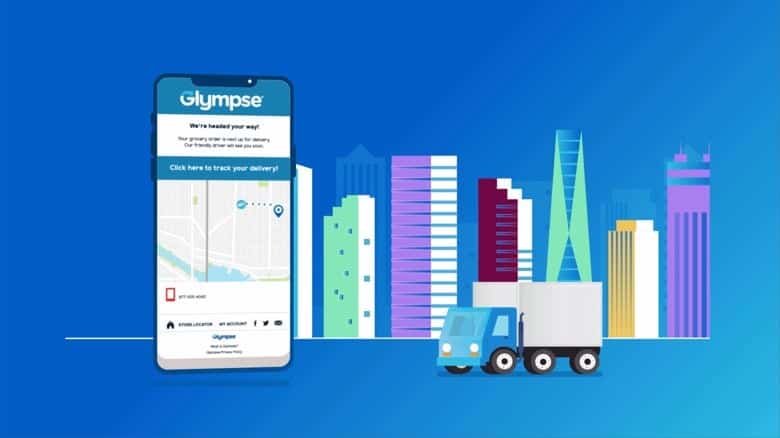Last Mile Delivery Defined
It’s a Friday night and you decide to order a pizza. It’s likely delivered within the hour. Maybe you sit down to eat that pizza and watch a movie, but you find yourself wishing you had a bigger TV. So, you decide to go online and order a new one. It will probably be on your doorstep in the next couple of days. Shortly after ordering your new TV, your internet crashes and stays that way for a few days. You decide to call a service technician to come out and fix it. All of those events have a “last mile.” The last mile is when that item or person finally arrives at your doorstep. It’s the last mile in the delivery process. But, what’s so important about last mile delivery and more precisely, last mile visibility?
Your items will get there when they get there, right? Wrong! What a terrible customer experience that must be to have no idea when your items will arrive or where they are in the process. There might be some people out there who don’t care. They’re the exception, not the rule, as most people and most of your customers want communication and insight into where their purchases are. From an employer perspective, you can’t just have your employees and products wandering aimlessly around without knowing where they are, what they’re doing and how long it’s taking them to do it. You and your customers need visibility into that last mile.
Challenges of Last Mile Delivery
Costs: The last mile delivery is actually factored into the shipping costs, but it makes up over 53% of that cost. It’s known to be the most expensive and time-consuming part of the shipping process. Reducing both costs and time could mean savings for both you and your customers.
Lack of Insight: Without technologies in place to be able to collect data and insights, it’s challenging to find trends and opportunities for efficiencies. Softwares provide fleet managers with real-time data regarding the location and odometer metrics. This allows them to make truly data-driven decisions.
Customer expectations: Customers expect their pizzas in less than 30 minutes. They expect their online orders delivered the next day. And they want their service technicians dispatched practically before they even submit their request for service. There is a high set of expectations from customers when it comes to ordering. An expectation you need to meet, or someone else (i.e. a competitor) will. That means working to fulfill orders quicker and more effectively, which isn’t always the easiest thing to do.
Operating Efficiencies: When it comes to last mile delivery, making on-time deliveries is key and drive time is critical in ensuring that happens. Having optimized route plans and insights into driver’s locations is necessary. If you’re able to improve route plans, you can also reduce fuel consumption and chances of missing delivery time windows.
Competition: Many would say that Amazon is dominating the last mile, given its introduction of two-day shipping, which has since evolved into same-day shipping. But, some analysts agree that there is room for others at the top. FedEx and UPS have been named as two with opportunity, but it’s also becoming increasingly challenging to stand out in this market.
Benefits of Improving Last Mile Visibility
While there are challenges to the last mile delivery process and it can be difficult to improve the visibility of it, there are benefits of investing, both time and money, improving it. A few of those benefits include:
Improve customer experience: By improving the customer experience and meeting or exceeding expectations, you can expect your customers to come back. This, in theory, should provide more sales and revenue for you. Word-of-mouth is also important here. If someone has a poor experience with your company, most people aren’t shy about sharing those experiences on social media. This could hurt your overall brand.
Ensure that your employees are being efficient and effective: Without last mile visibility and tracking, it would be tough to track this and in turn, improve it. Given the potential cost and time savings by improving your last mile delivery and increasing visibility, it’s not a bad idea to consider your options.
3 Ways to Improve Your Last Mile Visibility
Proof of Delivery: Legacy carriers like USPS have already started to improve their last mile visibility by incorporating tracking and proof of delivery. This data is important for traceability if the package gets lost or delayed. Now customers can see where the driver or package is at. Companies can also capture if the person doing the delivery went to the physical site or not.
Use omni-channel fulfillment systems: Interested in improving fleet utilization or route optimization? Want to ensure that schedules are even feasible to meet the promised ETA? Omni-channel fulfillment systems can help. They often have advanced algorithms, designed specifically for optimizing the last-mile.
Streamline your operations with real-time visibility and analytics: This allows you to see where the package or driver is, but it can also show you the journey the package/person took to get there. It will provide you valuable information that you can use to improve your process. Partnering with a company like Glympse allows customers to watch their food, package or service technician on its way, in real-time! Think of it like any ride-hailing app. Beyond just the benefit to the customer, there are benefits to employers who improve visibility into their last mile. As mentioned above, employers can cut costs on fuel consumption and reduce the amount of missed appointments/delivery windows.


